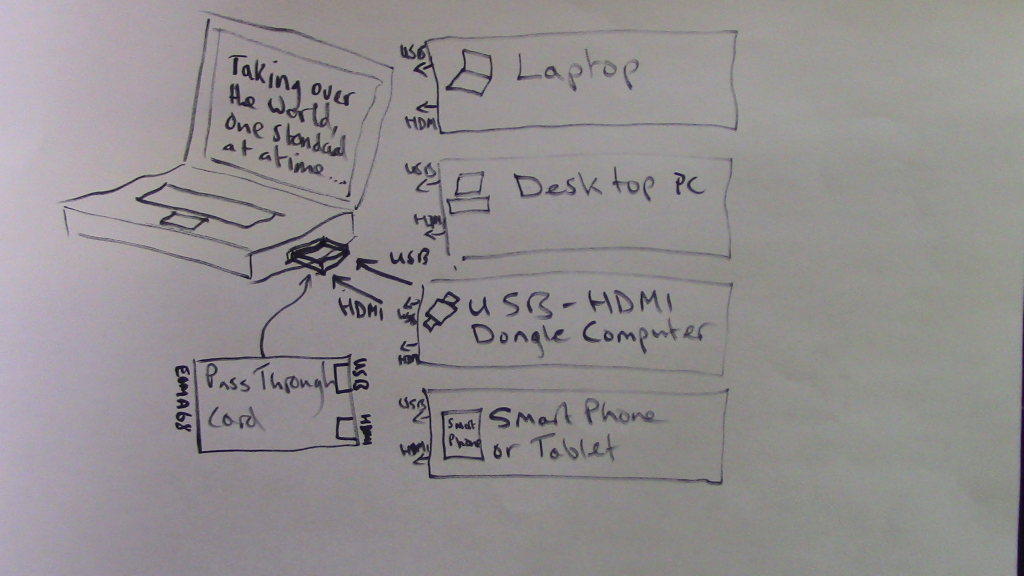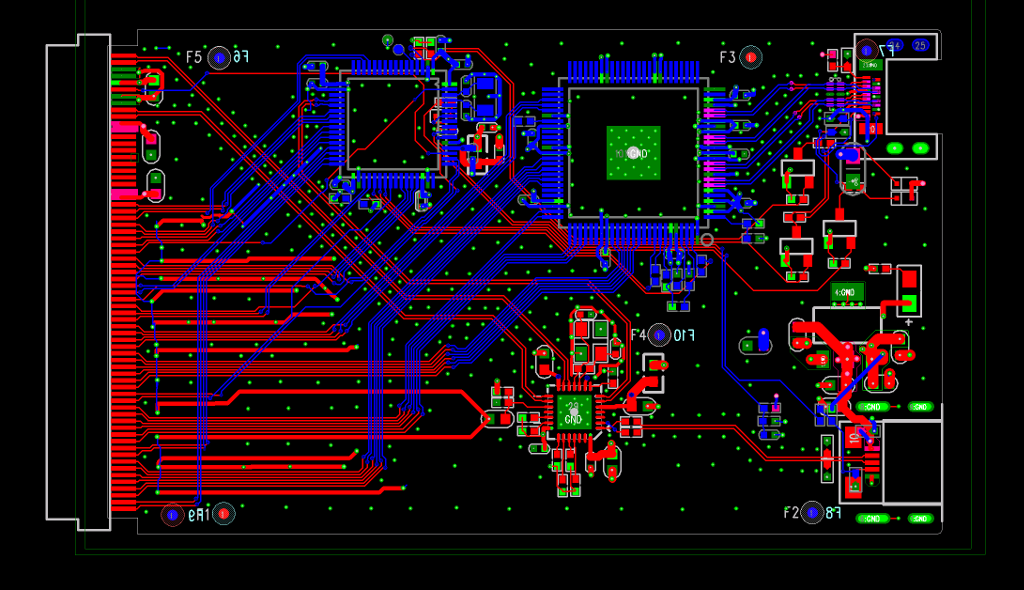The EOMA68 Passthrough Card
Originally documented on elinux.org the passthrough card allows an EOMA68 Housing to be turned into a peripheral that can then be plugged into other devices. In essence it turns a Laptop into a Lapdock, and has the same functionality as the Nexdock.
The uses are exactly the same.
Rough diagram:

PCB Revision 0.10 2016dec27
This revision EOMA68-Passthrough Card uses a TFP401a, following Watterot and Adafruit's schematics, except an STM32F072 is used instead of an Arduino style processor as in the Watterot HDMI Display design.
The STM32F072 will need to be programmed by default to have a DFU-style bootloader in its on-board NAND Flash, along-side an EOMA68 I2C EEPROM reader (and reporting mechanism) so that the type of Housing may be detected. Once detected, appropriate firmware may be uploaded by the host in order to tell the TFP401a what its DDC (EDID) data should be. This needs to be done by the STM32F072 emulating an I2C EEPROM rather than using a fixed I2C EEPROM because Housings may have completely different EDID data, and in fact may be variable data in the case of the Micro-Desktop (which has a VGA connector).
The secondary job of the STM32F072 is to act as an (SPI-based) SD/MMC gateway: in Housings which provide an SD/MMC Card that will mean it will need to emulate a USB mass-storage device; in instances where the Housings use the MMC pins for WIFI modules, the STM32F072 will obviously need to act as a SD-to-USB WIFI gateway.
Given that all of these functions are dynamic, it is impossible for such a small EC to contain all possible firmware combinations, so it needs to be dynamically re-programmed every time it is switched on in a new Housing.
It would be ideal if the STM32F072 was upgraded to something that was faster (supported USB 2.0 and natively supported SD/MMC 4-bit but for now it is sufficient.
